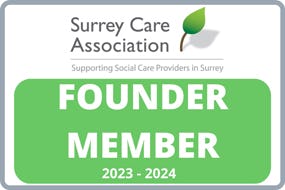Financing your care
Working out how to pay for your care can be a confusing and tricky business. We understand just how hard it is to even know where to start, and many people can end up losing their lifetime savings on paying for care when they didn’t need to. So, although it’s difficult to think about before you need it, planning ahead makes sense and that means understanding your options. To find out if you might be eligible for care, check out our funding pages and discover if you’re eligible for funding from your local authority and if you’re self-funding, the follow is four ways of paying for your care that makes good financial sense.
The Four Ways of Paying for Care
1. Cash
You could leave some or all of your capital in cash (the bank). You know where it is, can access it pretty quickly and won’t have any investment risk. The only problem really is that we have unprecedented low rates of interest at present which means that the income you can generate from cash accounts is very low.
2. Invest
If you want to try to get a better return on your capital then investing is the next step to consider. For most people who are paying for their care going anywhere near the risky stockmarket is a definite ‘no-no’. Instead most people will choose to invest in lower risk, mainstream funds that have a reasonable chance of giving a better return than would be achieved by leaving all of the capital in the bank.
It’s also a good idea to take a look at any existing investments you may have in order to see if they are set up to provide income. A surprising number of people have capital in poorly performing funds.
Whilst we can’t provide advice on which types of funds work best we do have access to a handpicked group of the UK’s most experienced investment advisers who specialise in investing to meet care costs. Let us know if you need help in this direction and we’ll happily put you in touch.
3. Care Fee Annuity
In principle, care fee annuities are very simple – some of your capital is used to buy yourself an income which can then pay for your care for the rest of your life.
The care funding problem is then largely solved with the writing of just one cheque. But you must make sure you think there is a good chance that you will get back in income the capital that you have used to buy the annuity. This is because the main downside of annuities is that the income stops on the death of the person who owns the annuity. This risk can be lessened somewhat by the addition of various guarantees however.
Generally the income you will get from this type of annuity is much higher than from an ordinary annuity but the cost will vary between individuals. The most important thing is therefore to establish the cost of the annuity in your circumstances. We can help to arrange this for you, it doesn’t cost you anything and there are no medicals involved.
4. Equity Release
Many of us have a lot of our wealth tied up in our house.
Equity release involves borrowing either a lump sum or an ongoing income from the value of your property. In most cases you wouldn’t make any repayments during your lifetime.
a) Using Equity Release to Create Income – Using the value of your property you can use equity release to provide you with an income that you could put towards the cost of your care.
b) Using Equity Release to Provide Capital – provide you with a single lump sum of capital. invest it or use it to purchase a care fee annuity.
Although equity release is usually one of the more expensive methods of paying for care, some equity release providers are now beginning to offer more flexible schemes with simple rather than compound (rolling up) interest which is generally cheaper. We can link you with specialist advisers in this area if required.
Thanks to the Live-in Care Hub for the above information. For more guidance on funding your care, take a look at our live-in and visiting care financial guides on paying for your care.
If you’re interested in finding out how we can help you live well at home, please don’t hesitate to get in touch. We’d love to hear from you.









